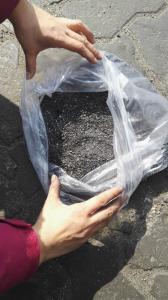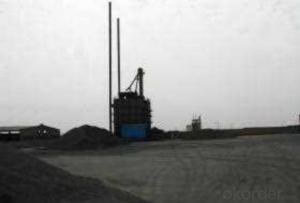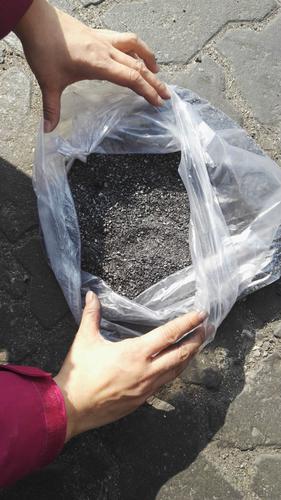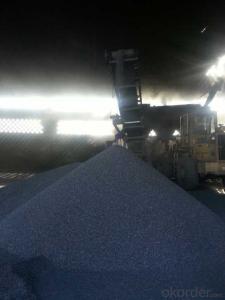FC90% Calcined Anthracite Coal with Fixed Carbon
- Loading Port:
- Tianjin
- Payment Terms:
- TT OR LC
- Min Order Qty:
- 20.5
- Supply Capability:
- 9650 m.t./month
OKorder Service Pledge
OKorder Financial Service
You Might Also Like
Introduction
Calcined Petroleum Coke comes from delayed coke which extracted from oil refinery. Although Calcined Petroleum Coke contains a little bit higher level of sulfur and nitrogen than pitch coke, the price advantage still makes it widely used during steel-making and founding as a kind of carbon additive/carburant.
Features
Carbon Additive also called Calcined anthracite Coal, Gas Calcined Anthracite Coal, Carbon Raiser, Recarburizer, injection coke, charging coke and etc.
It is playing more and more important role in the industry.The main raw material of our Carbon Additive is Ningxia unique high quality Taixi anthracite, with characteristic of low ash and low sulfur. Carbon additive has two main usage, fuel and additive. When being used as the carbon additive of steel-smelting, and casting, the fixed carbon may achieve above 95%.
Best quality Taixi anthracite as raw materials through high temperature calcined at 1200-1250 ℃ for 24 hours by the DC electric calciner with results in eliminating the moisture and volatile matter from Anthracite efficiently, improving the density and the electric conductivity and strengthening the mechanical strength and anti-oxidation, It has good characteristics with low ash, low resistivity, low carbon and high density. It is the best material for high quality carbon products, it is used as carbon additive in steel industry or fuel.
Specifications
PARAMETER UNIT GUARANTEE VALUE | |||||
F.C.% | 95MIN | 94MIN | 93MIN | 92MIN | 90MIN |
ASH % | 4MAX | 5MAX | 6MAX | 7MAX | 8MAX |
V.M.% | 1 MAX | 1MAX | 1.5MAX | 1.5MAX | 1.5MAX |
SULFUR % | 0.5MAX | 0.5MAX | 0.5MAX | 0.5MAX | 0.5MAX |
MOISTURE % | 0.5MAX | 0.5MAX | 0.5MAX | 0.5MAX | 0.5MAX |
Pictures
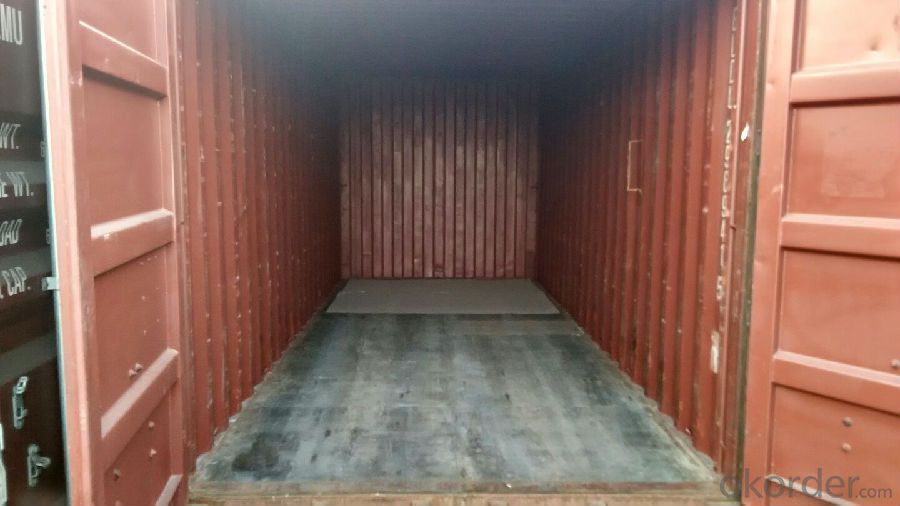


FAQ:
1. What is the packing?
In 25kg bag/ In jumbo bags without pallet/ Two jumbo bags with one pallet/ or as customers’ request
2. What is the production capacity?
10 thousand tons per month
3 What is payment term?
L/C, T/T
4 What is the service?
We will send sample to the third party(CIQ, CCIC, SGS,BV or to be discussed) for checking, and present the test certificate and loading repot of shipment.
- Q:Does alumina react with carbon?
- NotThe smelting of Al in industry can only be done by electrolysis. Even at high temperatures, the reducibility of C is not as strong as Al, and the melting point of Al2O3 is very high. At this temperature, C has been gasified
- Q:In Japanese, what's the difference between adding "carbon" and "sauce" after the name?
- Because this is similar to children's pronunciation is very cute, so sometimes good relationship between young people will use "carbon" pronunciation to install cute. So God, many animation or dramas in long sometimes "XX carbon ~" said.
- Q:How are fossil fuels formed from carbon?
- Carbon undergoes a natural process that spans millions of years, resulting in the formation of fossil fuels. This process commences with the remnants of plants and animals that existed millions of years ago. These remnants, containing carbon, become buried beneath layers of sediment in bodies of water such as oceans and swamps. Over time, the pressure exerted by the sediment layers and the heat emanating from the Earth's crust lead to the occurrence of diagenesis. During diagenesis, the organic matter within the remnants undergoes chemical alterations, turning it into a substance called kerogen. As additional sediment layers continue to accumulate, the temperature and pressure intensify. Eventually, the kerogen experiences catagenesis, wherein it is subjected to even higher temperatures. This causes the kerogen to disintegrate and convert into liquid and gaseous hydrocarbons, which constitute the primary constituents of fossil fuels. Crude oil or petroleum arises from the formation of liquid hydrocarbons, while natural gas arises from the formation of gaseous hydrocarbons. Both of these fossil fuels can be extracted from the Earth's crust through the process of drilling. In brief, fossil fuels are generated from carbon through a intricate and protracted process that encompasses the burial, pressure, and heat treatment of organic matter across millions of years. This process alters the remains rich in carbon into hydrocarbons, which subsequently become the valuable resources we employ as fossil fuels today.
- Q:How does carbon dioxide affect textile production?
- Textile production can be significantly impacted by carbon dioxide in various ways. Firstly, the manufacturing process of textiles generates carbon dioxide, which contributes to overall greenhouse gas emissions and worsens climate change. This, in turn, can result in long-term consequences like extreme weather events, rising temperatures, and sea-level rise. These outcomes can disrupt the supply chain and production of textiles. Furthermore, carbon dioxide emissions from textile production contribute to air pollution, which can adversely affect human health. Workers exposed to high levels of carbon dioxide may experience respiratory problems and other respiratory diseases as a result of the release of this greenhouse gas. Moreover, carbon dioxide is commonly used in the dyeing and finishing process of textile production. However, this practice can have detrimental effects on the environment. When carbon dioxide is released into water bodies during the dyeing process, it can contribute to water pollution, contaminating water sources and harming aquatic life. Additionally, excessive use of carbon dioxide in textile production can have economic implications. Since carbon dioxide is a byproduct of burning fossil fuels, its production is inherently tied to the consumption of non-renewable resources. The reliance on fossil fuels makes textile production vulnerable to price fluctuations, as the cost of carbon dioxide emissions and energy production can vary significantly. To mitigate the negative impacts of carbon dioxide on textile production, several measures can be implemented. These include adopting cleaner production techniques and technologies that reduce carbon dioxide emissions, such as utilizing renewable energy sources or implementing carbon capture and storage systems. Furthermore, investing in sustainable and environmentally-friendly materials, like organic cotton or recycled fibers, can help reduce the carbon footprint of textile production. Overall, reducing carbon dioxide emissions in textile production is crucial for the industry to become more sustainable and mitigate its environmental and health impacts.
- Q:What is carbon nanoelectrode?
- A carbon nanoelectrode is a tiny electrode made of carbon nanotubes or graphene that has unique electrical properties. It is used in various fields such as electrochemistry and bioelectronics, enabling highly sensitive and precise measurements due to its high surface area and conductivity.
- Q:How to extinguish the charcoal fire?
- The best way is to destroy the charcoal with residual charcoal poured into the water to save half of Tietong full out dry can be reused
- Q:What are the sources of carbon emissions?
- The sources of carbon emissions include burning fossil fuels (such as coal, oil, and natural gas) for electricity, transportation, and industrial processes, as well as deforestation and land-use changes.
- Q:How can we reduce carbon emissions from transportation?
- To mitigate climate change and improve air quality, it is crucial to reduce carbon emissions from transportation. Achieving this goal can be done through various strategies: 1. The promotion of electric vehicles (EVs) is key. Encouraging the adoption of electric cars, buses, and bikes can lead to a significant reduction in carbon emissions. Governments can make EVs more affordable by providing incentives like tax credits, rebates, and subsidies. Additionally, expanding the charging infrastructure network is essential to ease range anxiety and increase the adoption of EVs. 2. Investing in public transportation is another effective strategy. Enhancing and expanding public transportation systems can reduce the number of individual vehicles on the road, resulting in fewer emissions. Governments should prioritize the development of efficient and accessible public transport networks, including buses, trains, and trams. 3. Active transportation, such as walking and cycling, should be encouraged. These modes of transport can significantly reduce carbon emissions from short-distance trips. Building safe and convenient infrastructure like bike lanes and pedestrian-friendly streets can promote active transportation. 4. Improving fuel efficiency is crucial. Encouraging the production and purchase of vehicles with higher fuel efficiency standards can greatly reduce carbon emissions. Governments should enforce strict regulations and offer incentives to manufacturers producing fuel-efficient vehicles. 5. The development and promotion of alternative fuels can help reduce carbon emissions from transportation. Investing in alternative fuels like biofuels, hydrogen, and renewable natural gas is necessary. Governments should provide incentives and support research and development efforts to accelerate the adoption of these cleaner fuels. 6. Implementing congestion pricing and road tolls can discourage unnecessary car trips and reduce carbon emissions. Charging drivers for using congested roads or entering specific areas can encourage the use of public transportation or carpooling. 7. Promoting telecommuting and flexible work arrangements can reduce commuting trips and, consequently, carbon emissions. Governments and businesses can offer incentives to encourage companies to adopt these practices. 8. Rethinking urban planning is crucial. Designing cities and communities with mixed land-use patterns, where residential, commercial, and recreational areas are close by, can decrease the need for long commutes and promote active transportation. 9. Raising awareness and providing education about the environmental impact of transportation choices and the benefits of sustainable modes of transport is vital. Governments and organizations should launch campaigns to increase awareness and provide information about the carbon footprint of different transportation options. Reducing carbon emissions from transportation requires a comprehensive approach involving government policies, technological advancements, and changes in individual behavior. By implementing these strategies, significant progress can be made towards reducing carbon emissions and establishing a more sustainable transportation system.
- Q:What are the implications of melting permafrost on carbon emissions?
- The implications of melting permafrost on carbon emissions are significant and concerning. Permafrost refers to the permanently frozen ground found in cold regions, consisting of soil, rocks, and organic matter. It acts as a large carbon sink, storing vast amounts of organic material, such as dead plants and animals, which have been frozen for thousands of years. However, with rising global temperatures, permafrost is thawing at an alarming rate, leading to potential release of this stored carbon into the atmosphere. When permafrost thaws, the organic matter within it decomposes, releasing greenhouse gases, particularly carbon dioxide (CO2) and methane (CH4), into the atmosphere. Methane is an especially potent greenhouse gas, with a global warming potential over 25 times greater than that of CO2 over a 100-year period. The release of these gases further contributes to climate change, exacerbating the already accelerating warming trend. The implications of melting permafrost on carbon emissions are twofold. Firstly, the release of large amounts of CO2 and methane from thawing permafrost can significantly amplify the greenhouse effect, leading to more rapid and intense climate change. This can result in a feedback loop, where increased warming causes more permafrost thawing, releasing more carbon, and further accelerating global warming. Secondly, the release of carbon from permafrost also affects global carbon budgets and climate change mitigation efforts. The stored carbon in permafrost is estimated to be twice as much as is currently present in the Earth's atmosphere. As this carbon is released, it adds to the overall carbon emissions, making it more challenging to achieve emission reduction targets outlined in international agreements, such as the Paris Agreement. It also means that efforts to limit global warming to well below 2 degrees Celsius above pre-industrial levels become even more crucial. Furthermore, the release of carbon from permafrost also impacts local ecosystems and communities. Thawing permafrost can lead to the destabilization of infrastructure, including buildings, roads, and pipelines, as well as the disruption of traditional livelihoods, such as hunting and reindeer herding. It can also cause land subsidence and increased coastal erosion, threatening coastal communities and biodiversity. In conclusion, the implications of melting permafrost on carbon emissions are far-reaching. It not only exacerbates climate change by releasing potent greenhouse gases into the atmosphere but also hampers global efforts to mitigate carbon emissions. Sustainable actions to reduce greenhouse gas emissions and protect permafrost ecosystems are crucial to minimize these implications and safeguard our planet's future.
- Q:Is there a line cutting of carbon fibers?
- Technical characteristics:1 、 high strength and high efficiencyTensile strength is more than several times of ordinary steel, and the modulus of elasticity is better than that of steel. It has excellent creep resistance, corrosion resistance and seismic resistance.2 、 light weight and good flexibilityCarbon fiber is of high strength and quality only 1/5 of steel. It has higher toughness. It can be rolled and can be supplied in larger length without lapping.3, the construction is convenient, the construction quality is easy to guaranteeMaterial without pre processing, convenient process, allowing cross plate.4, good durability and corrosion resistanceAcid, alkali, salt and atmospheric corrosion, and should not be maintained regularly.
1. Manufacturer Overview |
|
|---|---|
| Location | |
| Year Established | |
| Annual Output Value | |
| Main Markets | |
| Company Certifications | |
2. Manufacturer Certificates |
|
|---|---|
| a) Certification Name | |
| Range | |
| Reference | |
| Validity Period | |
3. Manufacturer Capability |
|
|---|---|
| a)Trade Capacity | |
| Nearest Port | |
| Export Percentage | |
| No.of Employees in Trade Department | |
| Language Spoken: | |
| b)Factory Information | |
| Factory Size: | |
| No. of Production Lines | |
| Contract Manufacturing | |
| Product Price Range | |
Send your message to us
FC90% Calcined Anthracite Coal with Fixed Carbon
- Loading Port:
- Tianjin
- Payment Terms:
- TT OR LC
- Min Order Qty:
- 20.5
- Supply Capability:
- 9650 m.t./month
OKorder Service Pledge
OKorder Financial Service
Similar products
New products
Hot products
Hot Searches
Related keywords
